What is the Whole30?
The Whole30 is pretty much what it sounds like – 30 days of eating whole foods. The program, created by Melissa Hartwig & Dallas Hartwig, has a set of firm ground rules that guide the way you eat. It’s not a prescribed diet per se, but rather a template into which you plug the allowed foods to create your meals and snacks. Here we show 18 Dietitian-Approved Whole30 Meals.
The Whole30 has received some serious criticism from dietitians and other health professionals for being too rigid and for its exclusion of grains and dairy. Which is exactly why we wanted to share our thoughts on the Whole30 program. We’ve each done a few rounds of Whole30 and each time we’ve learned something about ourselves while improving our eating habits, our sleep, our complexion and our outlook on life. And we’ve then taken what we learned after the program to create a way of eating that’s unique to our needs that allows each of us to feel our best.
Think that sounds too good to be true? It isn’t. But this also isn’t a quick fix program designed to change a lifetime of destructive behaviors overnight. Nor is it meant to be a lifelong eating plan. It’s 30 days of super clean eating combined with self-care and self-discipline that can change the way you look at (and eat) food for better. You can learn more about the Whole30 here.
What the Whole30 isn’t.
- It isn’t a quick fix. The Whole30 isn’t meant to be a weight loss diet and nor is it meant to be used in a serial fashion before or after every beach vacation or when you feel like you’ve been ‘bad’ over the holidays. It is helpful in helping you create new habits – like eating regular meals, cooking more at home vs. hitting the drive-thru, bringing your attention to mindless snacking or late night dessert fests. Think of it like this: It’s a 30-day experiment where you are the only subject. An n=1 situation. You remove some confounding variables (gluten, soy, sugar, alcohol, dairy, etc.) that may be having an effect on your health. You assess how you feel physically and mentally (did your brain fog lift? why are you still craving sugar every afternoon? does your skin look clearer?) then you add back the foods you took out, one at a time and assess their effects on your health and mood. All told, the Whole30 actually takes about 45 days to do it ‘right’ with a 30-day elimination period and a 2-week (or longer) reintroduction. Just as if you were doing an elimination diet to determine if food X was causing symptom Y.
- It isn’t meant to be used long-term. Please don’t even think about doing a Whole -45, -60, -90, or -180. It’s most effective when used as an elimination diet with a thorough and well-planned reintroduction period so you figure out which foods don’t make you feel your best. Do the reintroduction period correctly, collect the data and move on. Use what you learned about to help shape your diet and behaviors surrounding food going forward. But please, don’t restrict yourself from something that doesn’t make you feel awful just because it doesn’t meet Whole30 criteria.
- The Whole30 isn’t designed to ‘cure’ your food issues. It’s helpful in helping you uncover issues you might have but it’s not going to cure them. Sometimes bringing attention to something is enough to help you make a change – for example, you always pass the office break room at 2:30 pm and there is always (insert tempting food here) in there and you always stop for a piece because that’s what you always do. Being aware of the habit means you can change your route or you can look the other or you can just decide that that is not a behavior that serves you. But if you’ve got something bigger going on like binge eating, using food as a reward or punishment, tying your value to what you eat or didn’t eat then you must seek help from a professional skilled in helping you with these issues. The Whole30 can’t fix them but it can help you see areas of weakness that need addressing.
Dietitians Thoughts on Whole30 program:
- It’s not forever. It’s 30 days. And you can do pretty much anything for 30 days. You can live without grains, dairy, sugar, chocolate, and alcohol for 30 days. You may not love it at first but it’s physiologically possible. And it’s not as harmful to do so as some opponents would lead you to believe. Just do yourself a favor and do a thorough Reintroduction so you can use that data to move forward and craft the most liberal and varied diet that still allows you to feel great.
- It’s not designed for weight loss. When you walk away from a diet that’s high in processed foods and turn instead to a diet of whole or minimally-processed food, most people will lose some weight. Often it’s in the form of water weight in the beginning, but as your 30 days continue weight loss is often a ‘side effect’ of a Whole30 done right.
- When done right, it’s a balanced way of eating. By ‘done right’ we mean 30 days of whole foods combined into meals and snacks that are heavy on the plant matter (veggies and fruit) with meat, fats and nuts/seeds used more like enhancements to the meal – not the main focus.
- It brings your attention to food quality. “Quality over quantity” should be the Whole30 mantra because when you feed your body the foods it needs, you don’t need to eat as much or all the extras. The non-stop snacking or grazing pretty much goes away when you eat balanced meals based on vegetables, protein, and fat. The Whole30 also promotes the use of the most sustainable and clean foods your budget can afford. This isn’t elitism, it’s conscious eating – choosing foods whose production methods are easier on the environment while offering up more nutrition in the form of vitamins, minerals, and important fatty acids also help you steer clear of mass-produced and highly-refined foods that may be preventing you from reaching your health goals. But if you just can’t afford it, don’t sweat it. Do the best you can with what you have – the point is to eat more unprocessed, whole foods whether they be organic/pastured/free-range/grass-fed/wild-caught/biodynamic, etc.
- Opens up your food world and expands your palate. This pretty much goes hand in hand with the previous point. When you ditch the processed packaged foods, grains and dairy you leave some space in your diet to try new foods. The Whole30 community is great at sharing new food finds and approved recipes – many of which are heavy on the vegetables or use vegetables in ways that you’ve never thought of (zoodles, anyone?) Another side benefit of passing on hyper-palatable processed foods is that your tastes buds change. Literally. You get new tastebuds daily and the further into your Whole30 you get, the greater your ability to appreciate subtle nuances of flavor in foods that you previously never noticed. And fruit tastes sweeter and more satisfying when you’re not used to everything being super sweet.
- It helps you recognize food cravings (and why you might have them). Doing a Whole30 may not cure you of your sugar or fatty food cravings permanently but it can help decrease them for a couple of reasons: 1) Sugar, fried foods and other highly-processed and somewhat addictive foods like ice cream, candy, energy drinks, onion rings, chips, cookies, and other baked goods just aren’t allowed, 2) after a period of abstinence from a certain food you tend to lose interest in it. This, of course, takes some time and ‘skill-power’ to keep you away from the food until it becomes less appealing, and 3) when you feed your body wholesome and nourishing foods that provide ample calories, protein, fat, and micronutrients while balancing your blood sugars, you have fewer physiological cravings for certain foods. The ‘mental’ cravings can also be lessened by consuming a balanced, super clean diet though we’ve found that coupling diet with self-care activities like exercise, journaling, meditation and time outdoors helps improve the likelihood of squelching food cravings. Now, will you be cured of the chocolate craving? Doubtful, but chances are good you’ll have a much easier time handling cravings when they come up again (and may be better able to head them off at the pass or enjoy just enough the food to satisfy the craving).
- It can help you identify food sensitivities. If you suspect that a sensitivity to gluten, dairy, soy or other foods are to blame for poor digestion, fatigue, headaches, acne, joint pain, etc. then a Whole30 is a great way to eliminate these common irritants or allergens and allow your body to heal. After 30 days you can slowly reintroduce each food to monitor for a return of symptoms. Critics of the Whole30 often cite the elimination of entire groups of food as being unnecessarily restrictive but we disagree. As dietitians, we’ve been using elimination diets with our clients for years to help them improve their health and uncover hidden food sensitivities.
- It’s hard. You have to commit 100%. We’re not going to sugar-coat anything here, doing a Whole30 is hard. But it’s not impossible. With the right mindset (“This isn’t forever”, “My health is important”, “I deserved to feel my best”) and some advance planning, you can successfully complete a Whole30. Keep in mind though that you have to commit 100% to get the most out of the program. There are no cheats or shortcuts. Failing to stick to your guns will give you sub-par results and won’t help you tame cravings or discover which foods make you feel like a rockstar. Remember, this is your chance to collect data for the most important health experiment ever: You.
Is the Whole30 for you?
The Whole30 can safely be done by just about everyone. However, you need to be committed. You need to have a greater desire to improve your health than to continue consuming food and drinks that are keeping you bloated, tired and stuck. If you’re willing to set aside grains, dairy, soy, sugar, alcohol, legumes, baked goods, and other treats or trigger foods for 30 days then you’re a pretty good candidate for a Whole30. If you’re also willing to put some extra time and planning into your meals and snacks, then you’re even better suited for a Whole30. If you take that one step further and commit to sticking to your guns at parties, happy hours and other social situations for the next month, then it’s safe to say that your chances of successfully completing a Whole30 have gone up substantially.
Who the Whole30 isn’t for:
- History of disordered eating. If you have a history of any kind of disordered eating or food addiction, the Whole30 is not for you. We agree with the program creators that the program rules can worsen disordered or restrictive eating so we can’t recommend the Whole30 to anyone in this situation.
- Looking for a quick fix. As we mentioned earlier, the Whole30 isn’t a quick fix or a weight loss program. It’s 30 days of committed and planned eating. You’ve gotta work for your results and sometimes, even 30 days isn’t enough to reset or relieve nagging health issues like acne, bloating, poor digestion or fatigue. Sometimes you have to go longer and keep evaluating what’s working and what isn’t. So if it’s a quick fix you’re looking for, keep looking. This isn’t it.
Click here to read our top tips for thriving on a Whole30
- You follow a strict vegan diet. It’s not that you can’t do a Whole30 as a vegan but it is significantly more difficult as the program does encourage animal products to provide adequate fat and protein. With the removal of grains, legumes, and soy it’s difficult to get enough protein to meet your body’s needs. In addition, though the program does encourage the use of humanely and sustainably raised animal products it definitely advocates for the inclusion of meat and poultry – so not likely a good fit for a strict vegan.
Interested in doing your own Whole30?
We recommend picking up a copy of It Starts with Food or the Whole30 to get you started. Or just drop by Whole30.com to browse all of the free resources available there.
Pin it!
The information shared in this Dietitians Thoughts on Whole30 post is based solely on our own opinions and experiences. We have received no compensation of any kind from Whole30 or it’s partners in the creation of this post.
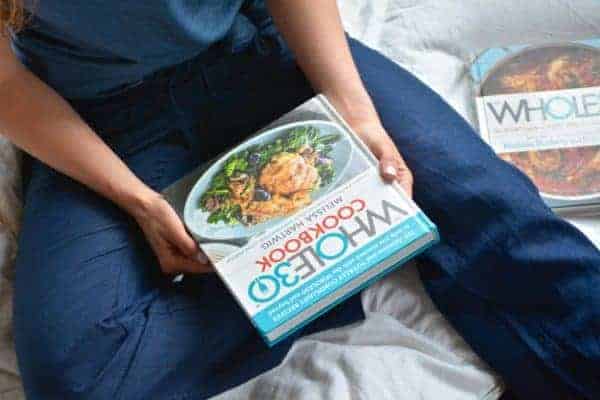
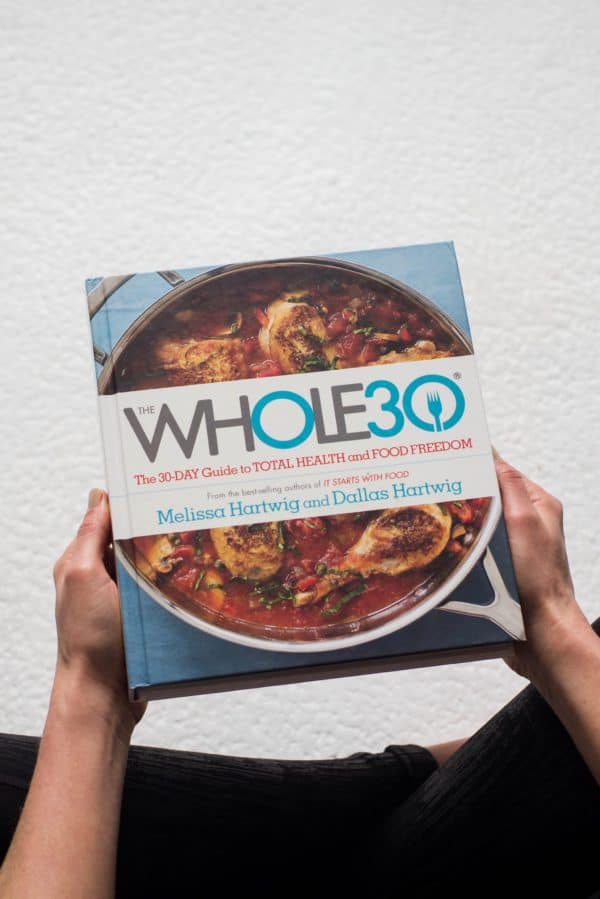
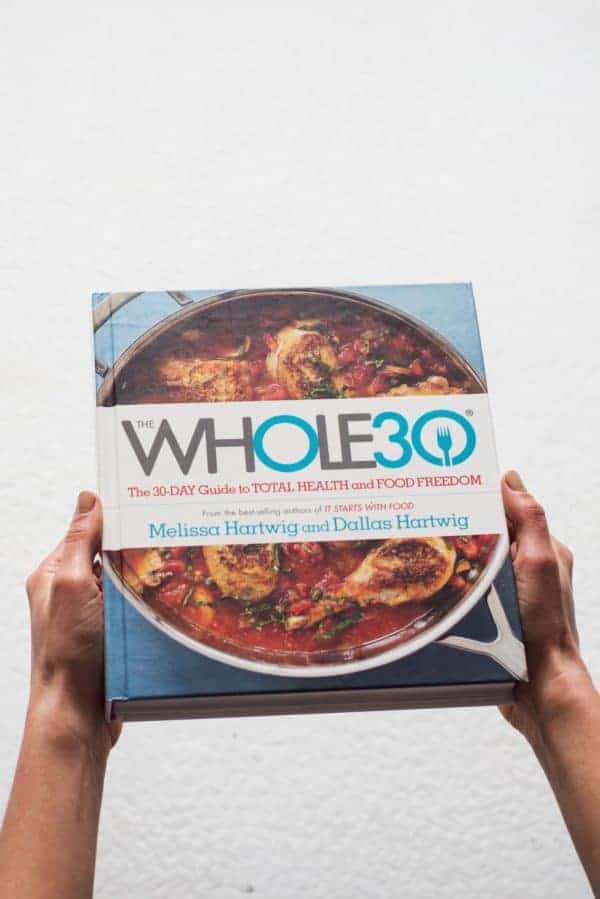
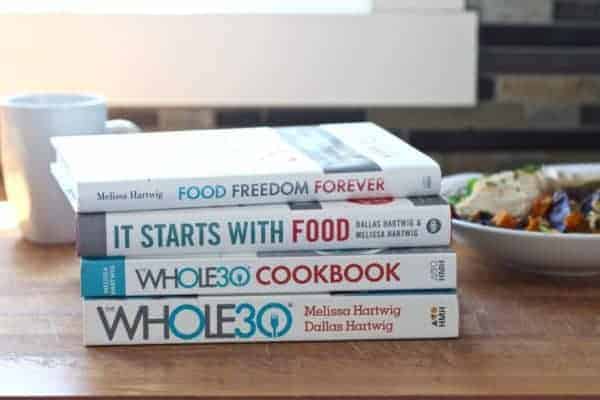
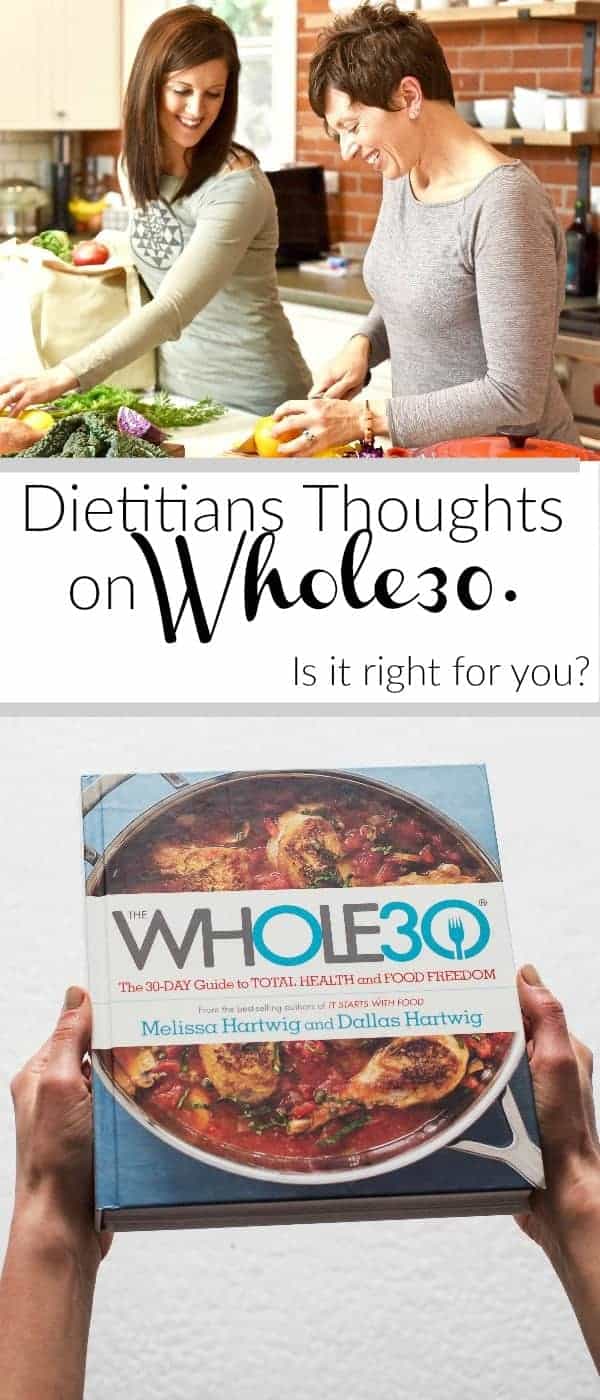
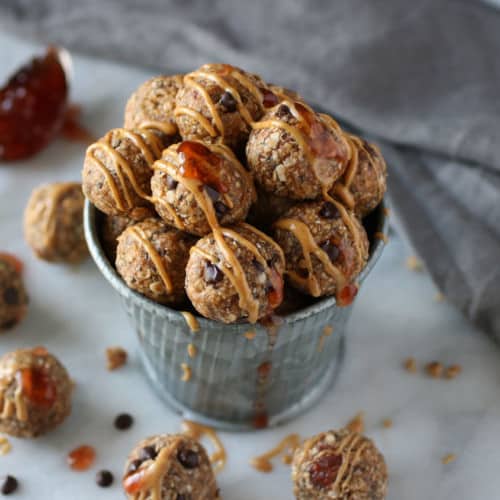
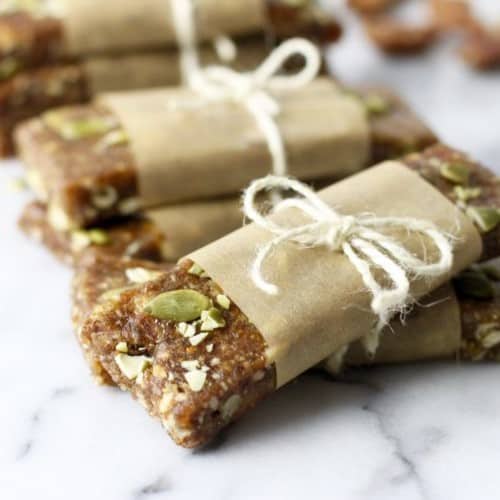
I have to admit I was nervous to open this article. I started this program on Monday. I really trust the two of you and your expertise. I am so relieved that you both endorse the Whole 30 program! Although I am only on Day 5, I truly feel so much better! Quick question for you, since smoothies are not encouraged on this program how would you recommend I take my vital proteins collagen (I am having a tough time only blending it with water!). Thank you!
Hi Trish,
I’m so glad this post was helpful! I know there aren’t a ton of RD’s who support the Whole30 because of it’s restrictiveness but after working in private practice for over 5 years and using the ‘elimination diet’ (which, compared to testing, is the gold standard) to uncover sensitivities and intolerances and fix digestive issue in my clients, I can’t honestly say that the Whole30 is a more liberal program.
I also appreciate their focus on food quality and some of the mental work that needs to happen along with the diet portion when you’re trying to retrain yourself with regards to food cravings and bad habits.
Congrats on making it to Day 5 – everyday is a victory. My advice is to take it one meal at a time and pretty soon you’ll be crossing the Day 30 finish line.
As for the collagen, you can stir it into coffee or tea – or add it to broth, soup/stew, mashed sweet potato, guacamole or even a little unsweetened applesauce (the last option would be using as little applesauce as necessary to get the collagen blended in rather than enjoying a big bowl of fruit!)
Hope that helps!!
Great! So happy to hear you’re feeling better and it’s only day 5 for you! I’ll be starting on the 5th. Woot! Good question…You could mix collagen into coffee (this is what I do most often), tea, mashed sweet potatoes/squash, mashed cauliflower, cauliflower hummus, homemade dressings, nut butters – pretty much anything that is blended or mashed. Hope this helps!
Of all of the diets or 30 day fixes, Whole 30 definitely seems to be the most balanced and just simple. There are no special diet foods, just lots of whole foods. I’m definitely not against it. 🙂
Thanks for chiming in, Emily! We totally agree. The beauty of it is that you can make it as balanced and customized as you wish simply by choosing which foods you eat and how you prepare them. So ultimately, the responsibility lies with the ‘user’ – if you aren’t prepared or motivated you will turn to ‘approved’ pre-made and packaged foods. Having a plan and plenty of fresh veggies and some fruit along with precooked proteins has always been our saving grace when doing a Whole30.
Wow this is seriously an amazing post. I’ve been tempted to try the Whole 30 to see if it helps with some psoriasis flare ups, but never really looked into it further due to all of the foods it restricts. I do have a history of disordered eating but I’m in a much better place now. I would definitely reconsider doing the whole 30 after reading your thoughts. Thank you for putting it all out there!
Thanks, Ashley!
In my experience working with clients with psoriasis and other autoimmune issues, an elimination diet has been my tool of choice for uncovering hidden food sensitivities that are trigger the immune response.
When approached in this way, rather than with a focus on weight loss, and the motivation is to abate painful symptoms- I have found that those in a stable place with regards to a history of disordered eating can do really well with a Whole30 (which as I noted above, is very much like the standard elimination diet).
Of course, everyone is different so honestly evaluating your history, your motives, your goals and having a plan to be able to address any disordered eating behaviors if they crop up — would be imperative before starting any program that involves restriction, in my opinion.
What about high cholesterol in this program? It seems there is a lot of saturated fat in many recipes. I want to try this but am hesitant because of the saturated fat.
Hi Karen,
Thanks for addressing a great question and one that many people, no doubt, have!
Recent evidence has disproven the diet-heart, or lipid hypothesis, originally presented more than 50 years ago and have overturned the decades-long vilification of saturated fat and cholesterol as the cause of heart disease. That said you can learn more here: https://chriskresser.com/the-diet-heart-myth-cholesterol-and-saturated-fat-are-not-the-enemy/ and here: https://healthimpactnews.com/2014/time-magazine-we-were-wrong-about-saturated-fats/
Hope that helps!
Hi Jessica,
What do you recommend for someone who has hereditary familial hyperlipidemia? From what my MDs have told me, saturated fat is still of a concern for those of us with a hereditary disorder, as there doesn’t seem to be any significant research findings to disprove the saturated fat-heart disease correlation when it comes to the genetic disorder. Any words of advice regarding this? Thanks so much!
Hi Danielle,
Unfortunately, given the nature of familial hyperlipidemia and the body’s inability to properly process fat and cholesterol, it is still recommended that you carefully monitor your intake certain fats as the risk for heart disease is higher in this population. The debunking of the lipid hypothesis really only applies to those without this condition or who are otherwise considered metabolically ‘normal’.
What you can do, however, is focus on whole and unprocessed foods as much as possible in an effort to lower total body inflammation while still limiting your fat intake (both amount and types) consistent with your doctor’s recommendation.
Hope that helps!
Hi Jessica!
Thanks for getting back to me. It certainly does help. You just confirmed my thoughts, even if it wasn’t what I wanted to hear. 😉
What kind of fats and appropriate portion size would you recommend eating for someone like me? I tend to gravitate towards certain nut butters/nuts (cashews, hazelnuts, almonds — I probably eat too many), avocados, and sometimes olives. I primarily cook with and use avocado oil and EVOO. I’ll use coconut oil sparingly when I bake, but try to use vegetable/palm shortening instead. I do eat the occasional grass-fed butter and stick to goat, feta, mozzarella (this is sparingly, too), Dubliner’s cheddar cheese when I eat dairy.
Thank you, my dear! 🙂
Hi Danielle,
Without knowing much more about your nutrition and health history, goals, etc. I can’t say for sure what amount of these foods you should be eating in a day. However, as a general rule – I urge people to limit their nut intake to 1/2 cup per day – less if they’re trying to lose weight or have inflammation-related symptoms (as nuts are high in omega-6 fatty acids which are more inflammatory than their omega-3 cousins).
As far as which fats to use, it sounds like you’re choosing some good ones considering your hereditary hyperlipidemia. Again, the amount would depend on your health status and goals.
My brother n law has used the Whole30 for the past year. He has a history of high cholesterol and blood pressure. His cholesterol numbers have dropped significantly from the low 300s to low 200s while his bad cholesterol has been cut in half and his good cholesterol has doubled. He is almost off all blood pressure medicine. He has done this eating bacon and eggs every morning. His doctor was in disbelief when he saw the improved numbers and heard what he was eating.
I know this post was some time ago but would love your input. I have been looking for some feedback from a dietician so your website was a welcome find! My husband and I are both almost done with our first Whole30. We have not cheated and have seen some great things. But I am very concerned that we have not been eating enough calories. My chiropractor asked me the other day and made me take a closer look… and I was surprised when I added up our calorie intake. We have been following their meal template – probably little lite on the protein on a few meals but I think pretty much ok. Neither of us are feeling hungry at end of meals and if we are we in between meals we eat a snack. When I added up I was at about 1200 and he was maybe more like 1500. We are both a bit overweight, in our 40s and are not terribly active for our jobs. We both started doing 30 min exercise last couple of weeks (me treadmill him rowing machine). I’ve been dealing with dizziness and joint pain – but I also think it may be related to an egg sensitivity. We both have had some days of Tiger Blood but today I have zero energy. So the question is – does calorie intake matter if eating enough? We both would like to continue eating this way after 30 days and would like to keep losing some weight. I know they say not to count calories and I totally get why. I am reading its starts with food but they really don’t address this. Sorry didn’t mean to write a book!
Hi Mary, great questions! I would suggest slowly increasing your calories as 1200 is quite low for women which could put a damper on your metabolism. I recommend that you start by having one more serving of carbs/day (~15 g), 1 extra oz of protein/day at lunch and dinner (total ~14 g) and 1 extra serving of fat/day (~9 g). Your body will know what to do with it and after a couple of week, increase again. The goal is to nourish your body with as many nutrients as you can, while still seeing the results you want. The notion of not counting calories is so that you really listen to your body. However, in this case because you are quite low in calories, I’d suggest counting 2-3 days/week to see where you are at and to make sure you are getting enough. Hope that helps!